Yingli Tian
SepPrune: Structured Pruning for Efficient Deep Speech Separation
May 17, 2025Abstract:Although deep learning has substantially advanced speech separation in recent years, most existing studies continue to prioritize separation quality while overlooking computational efficiency, an essential factor for low-latency speech processing in real-time applications. In this paper, we propose SepPrune, the first structured pruning framework specifically designed to compress deep speech separation models and reduce their computational cost. SepPrune begins by analyzing the computational structure of a given model to identify layers with the highest computational burden. It then introduces a differentiable masking strategy to enable gradient-driven channel selection. Based on the learned masks, SepPrune prunes redundant channels and fine-tunes the remaining parameters to recover performance. Extensive experiments demonstrate that this learnable pruning paradigm yields substantial advantages for channel pruning in speech separation models, outperforming existing methods. Notably, a model pruned with SepPrune can recover 85% of the performance of a pre-trained model (trained over hundreds of epochs) with only one epoch of fine-tuning, and achieves convergence 36$\times$ faster than training from scratch. Code is available at https://github.com/itsnotacie/SepPrune.
Enhancing Facial Privacy Protection via Weakening Diffusion Purification
Mar 13, 2025Abstract:The rapid growth of social media has led to the widespread sharing of individual portrait images, which pose serious privacy risks due to the capabilities of automatic face recognition (AFR) systems for mass surveillance. Hence, protecting facial privacy against unauthorized AFR systems is essential. Inspired by the generation capability of the emerging diffusion models, recent methods employ diffusion models to generate adversarial face images for privacy protection. However, they suffer from the diffusion purification effect, leading to a low protection success rate (PSR). In this paper, we first propose learning unconditional embeddings to increase the learning capacity for adversarial modifications and then use them to guide the modification of the adversarial latent code to weaken the diffusion purification effect. Moreover, we integrate an identity-preserving structure to maintain structural consistency between the original and generated images, allowing human observers to recognize the generated image as having the same identity as the original. Extensive experiments conducted on two public datasets, i.e., CelebA-HQ and LADN, demonstrate the superiority of our approach. The protected faces generated by our method outperform those produced by existing facial privacy protection approaches in terms of transferability and natural appearance.
ADM-Loc: Actionness Distribution Modeling for Point-supervised Temporal Action Localization
Nov 27, 2023



Abstract:This paper addresses the challenge of point-supervised temporal action detection, in which only one frame per action instance is annotated in the training set. Self-training aims to provide supplementary supervision for the training process by generating pseudo-labels (action proposals) from a base model. However, most current methods generate action proposals by applying manually designed thresholds to action classification probabilities and treating adjacent snippets as independent entities. As a result, these methods struggle to generate complete action proposals, exhibit sensitivity to fluctuations in action classification scores, and generate redundant and overlapping action proposals. This paper proposes a novel framework termed ADM-Loc, which stands for Actionness Distribution Modeling for point-supervised action Localization. ADM-Loc generates action proposals by fitting a composite distribution, comprising both Gaussian and uniform distributions, to the action classification signals. This fitting process is tailored to each action class present in the video and is applied separately for each action instance, ensuring the distinctiveness of their distributions. ADM-Loc significantly enhances the alignment between the generated action proposals and ground-truth action instances and offers high-quality pseudo-labels for self-training. Moreover, to model action boundary snippets, it enforces consistency in action classification scores during training by employing Gaussian kernels, supervised with the proposed loss functions. ADM-Loc outperforms the state-of-the-art point-supervised methods on THUMOS14 and ActivityNet-v1.2 datasets.
POTLoc: Pseudo-Label Oriented Transformer for Point-Supervised Temporal Action Localization
Oct 20, 2023Abstract:This paper tackles the challenge of point-supervised temporal action detection, wherein only a single frame is annotated for each action instance in the training set. Most of the current methods, hindered by the sparse nature of annotated points, struggle to effectively represent the continuous structure of actions or the inherent temporal and semantic dependencies within action instances. Consequently, these methods frequently learn merely the most distinctive segments of actions, leading to the creation of incomplete action proposals. This paper proposes POTLoc, a Pseudo-label Oriented Transformer for weakly-supervised Action Localization utilizing only point-level annotation. POTLoc is designed to identify and track continuous action structures via a self-training strategy. The base model begins by generating action proposals solely with point-level supervision. These proposals undergo refinement and regression to enhance the precision of the estimated action boundaries, which subsequently results in the production of `pseudo-labels' to serve as supplementary supervisory signals. The architecture of the model integrates a transformer with a temporal feature pyramid to capture video snippet dependencies and model actions of varying duration. The pseudo-labels, providing information about the coarse locations and boundaries of actions, assist in guiding the transformer for enhanced learning of action dynamics. POTLoc outperforms the state-of-the-art point-supervised methods on THUMOS'14 and ActivityNet-v1.2 datasets, showing a significant improvement of 5% average mAP on the former.
ASL-Homework-RGBD Dataset: An annotated dataset of 45 fluent and non-fluent signers performing American Sign Language homeworks
Jul 08, 2022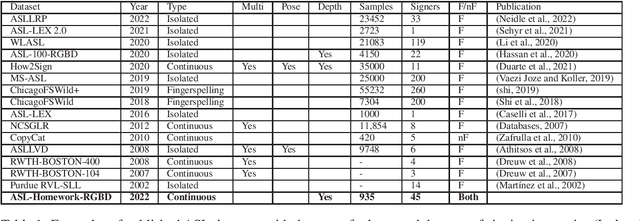
Abstract:We are releasing a dataset containing videos of both fluent and non-fluent signers using American Sign Language (ASL), which were collected using a Kinect v2 sensor. This dataset was collected as a part of a project to develop and evaluate computer vision algorithms to support new technologies for automatic detection of ASL fluency attributes. A total of 45 fluent and non-fluent participants were asked to perform signing homework assignments that are similar to the assignments used in introductory or intermediate level ASL courses. The data is annotated to identify several aspects of signing including grammatical features and non-manual markers. Sign language recognition is currently very data-driven and this dataset can support the design of recognition technologies, especially technologies that can benefit ASL learners. This dataset might also be interesting to ASL education researchers who want to contrast fluent and non-fluent signing.
Sequential Point Clouds: A Survey
Apr 21, 2022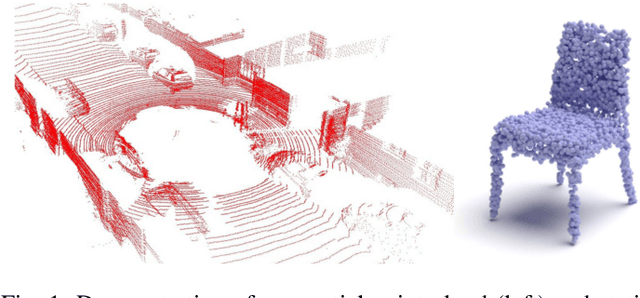

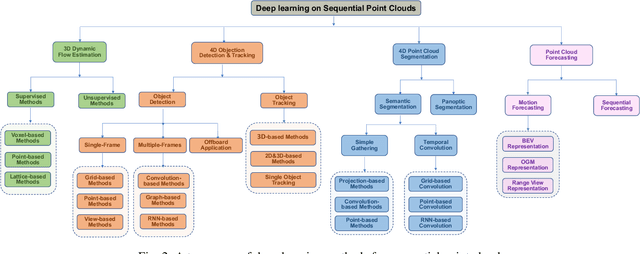

Abstract:Point cloud has drawn more and more research attention as well as real-world applications. However, many of these applications (e.g. autonomous driving and robotic manipulation) are actually based on sequential point clouds (i.e. four dimensions) because the information of the static point cloud data could provide is still limited. Recently, researchers put more and more effort into sequential point clouds. This paper presents an extensive review of the deep learning-based methods for sequential point cloud research including dynamic flow estimation, object detection \& tracking, point cloud segmentation, and point cloud forecasting. This paper further summarizes and compares the quantitative results of the reviewed methods over the public benchmark datasets. Finally, this paper is concluded by discussing the challenges in the current sequential point cloud research and pointing out insightful potential future research directions.
PSMNet: Position-aware Stereo Merging Network for Room Layout Estimation
Mar 30, 2022
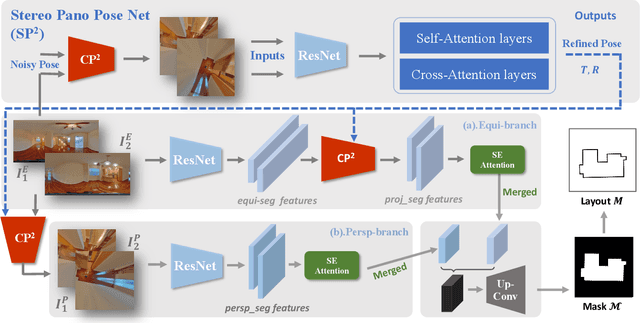
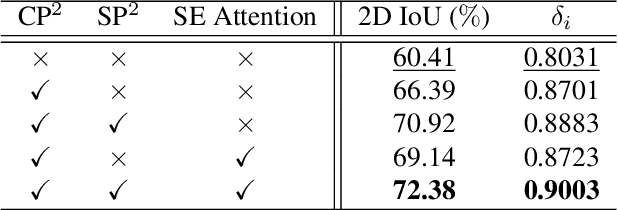
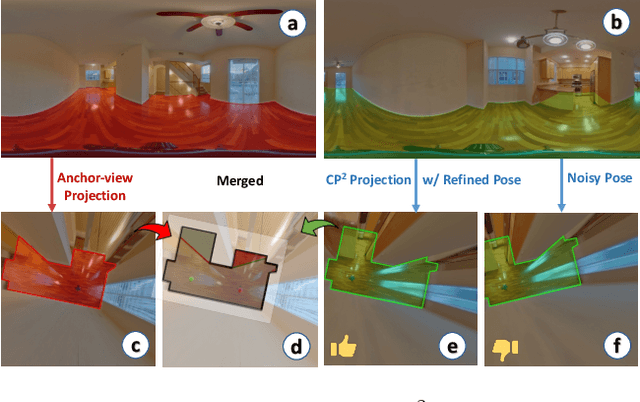
Abstract:In this paper, we propose a new deep learning-based method for estimating room layout given a pair of 360 panoramas. Our system, called Position-aware Stereo Merging Network or PSMNet, is an end-to-end joint layout-pose estimator. PSMNet consists of a Stereo Pano Pose (SP2) transformer and a novel Cross-Perspective Projection (CP2) layer. The stereo-view SP2 transformer is used to implicitly infer correspondences between views, and can handle noisy poses. The pose-aware CP2 layer is designed to render features from the adjacent view to the anchor (reference) view, in order to perform view fusion and estimate the visible layout. Our experiments and analysis validate our method, which significantly outperforms the state-of-the-art layout estimators, especially for large and complex room spaces.
The State of Aerial Surveillance: A Survey
Jan 13, 2022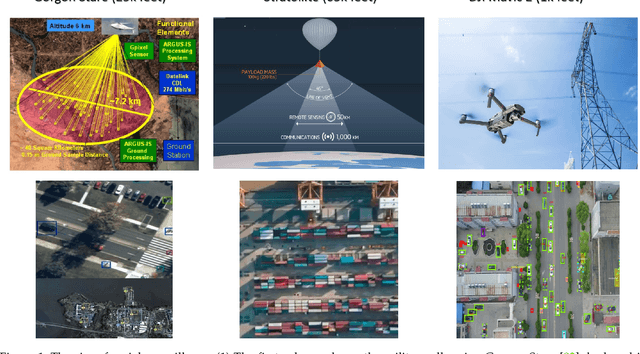
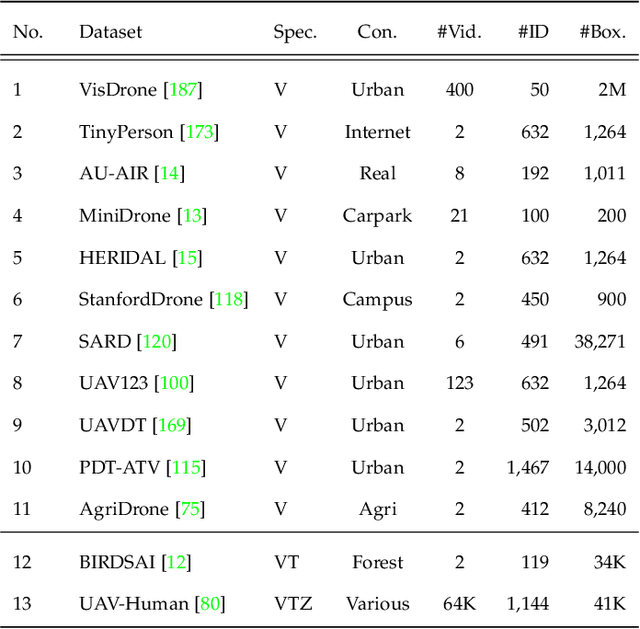
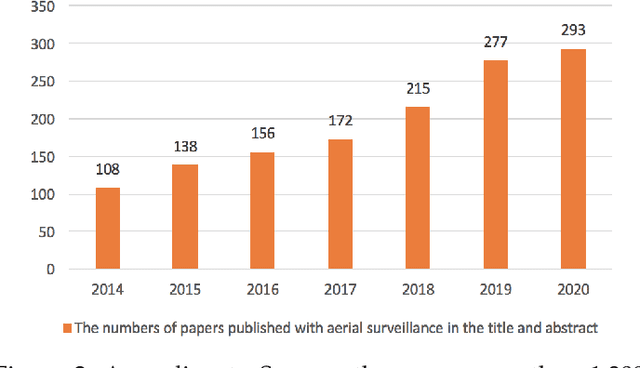

Abstract:The rapid emergence of airborne platforms and imaging sensors are enabling new forms of aerial surveillance due to their unprecedented advantages in scale, mobility, deployment and covert observation capabilities. This paper provides a comprehensive overview of human-centric aerial surveillance tasks from a computer vision and pattern recognition perspective. It aims to provide readers with an in-depth systematic review and technical analysis of the current state of aerial surveillance tasks using drones, UAVs and other airborne platforms. The main object of interest is humans, where single or multiple subjects are to be detected, identified, tracked, re-identified and have their behavior analyzed. More specifically, for each of these four tasks, we first discuss unique challenges in performing these tasks in an aerial setting compared to a ground-based setting. We then review and analyze the aerial datasets publicly available for each task, and delve deep into the approaches in the aerial literature and investigate how they presently address the aerial challenges. We conclude the paper with discussion on the missing gaps and open research questions to inform future research avenues.
Deep Learning-based Action Detection in Untrimmed Videos: A Survey
Sep 30, 2021



Abstract:Understanding human behavior and activity facilitates advancement of numerous real-world applications, and is critical for video analysis. Despite the progress of action recognition algorithms in trimmed videos, the majority of real-world videos are lengthy and untrimmed with sparse segments of interest. The task of temporal activity detection in untrimmed videos aims to localize the temporal boundary of actions and classify the action categories. Temporal activity detection task has been investigated in full and limited supervision settings depending on the availability of action annotations. This paper provides an extensive overview of deep learning-based algorithms to tackle temporal action detection in untrimmed videos with different supervision levels including fully-supervised, weakly-supervised, unsupervised, self-supervised, and semi-supervised. In addition, this paper also reviews advances in spatio-temporal action detection where actions are localized in both temporal and spatial dimensions. Moreover, the commonly used action detection benchmark datasets and evaluation metrics are described, and the performance of the state-of-the-art methods are compared. Finally, real-world applications of temporal action detection in untrimmed videos and a set of future directions are discussed.
Advancing Self-supervised Monocular Depth Learning with Sparse LiDAR
Sep 21, 2021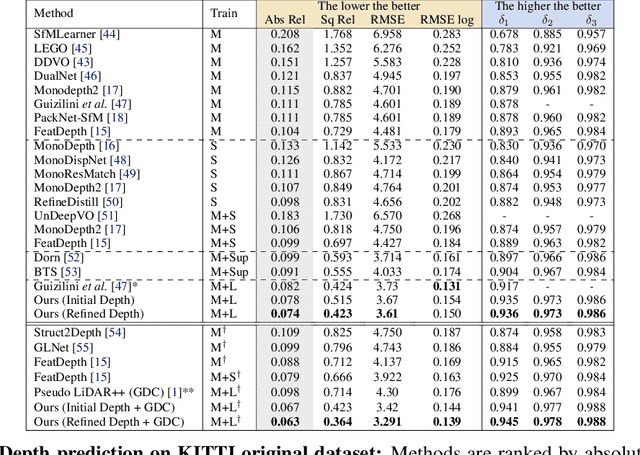
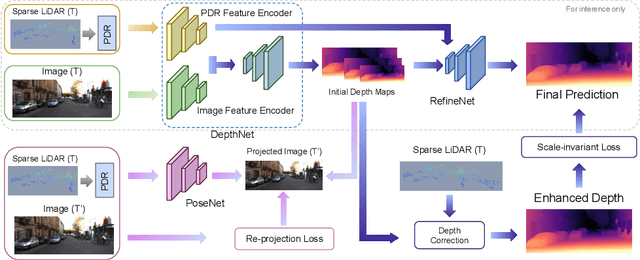
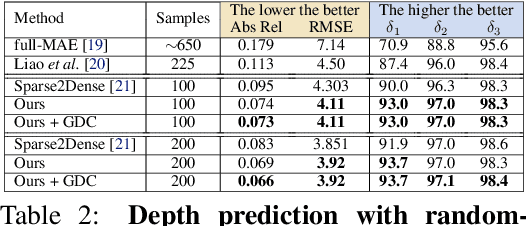
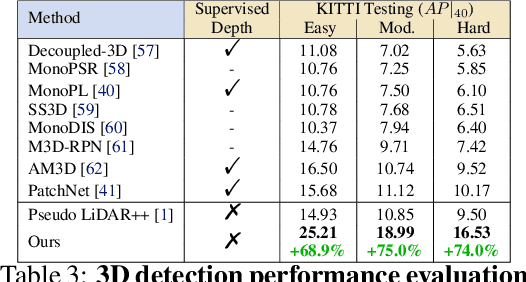
Abstract:Self-supervised monocular depth prediction provides a cost-effective solution to obtain the 3D location of each pixel. However, the existing approaches usually lead to unsatisfactory accuracy, which is critical for autonomous robots. In this paper, we propose a novel two-stage network to advance the self-supervised monocular dense depth learning by leveraging low-cost sparse (e.g. 4-beam) LiDAR. Unlike the existing methods that use sparse LiDAR mainly in a manner of time-consuming iterative post-processing, our model fuses monocular image features and sparse LiDAR features to predict initial depth maps. Then, an efficient feed-forward refine network is further designed to correct the errors in these initial depth maps in pseudo-3D space with real-time performance. Extensive experiments show that our proposed model significantly outperforms all the state-of-the-art self-supervised methods, as well as the sparse-LiDAR-based methods on both self-supervised monocular depth prediction and completion tasks. With the accurate dense depth prediction, our model outperforms the state-of-the-art sparse-LiDAR-based method (Pseudo-LiDAR++) by more than 68% for the downstream task monocular 3D object detection on the KITTI Leaderboard.
 Add to Chrome
Add to Chrome Add to Firefox
Add to Firefox Add to Edge
Add to Edge